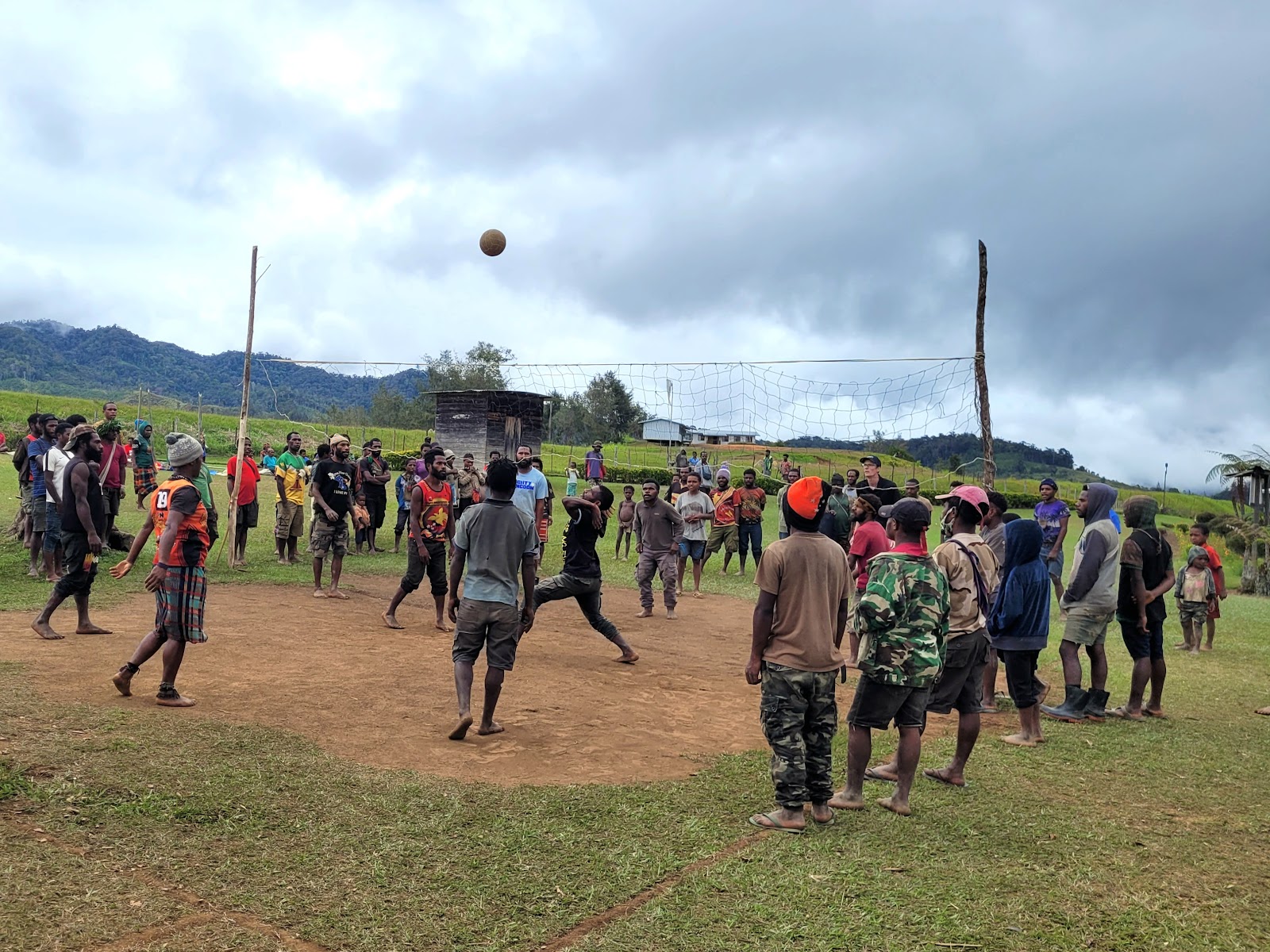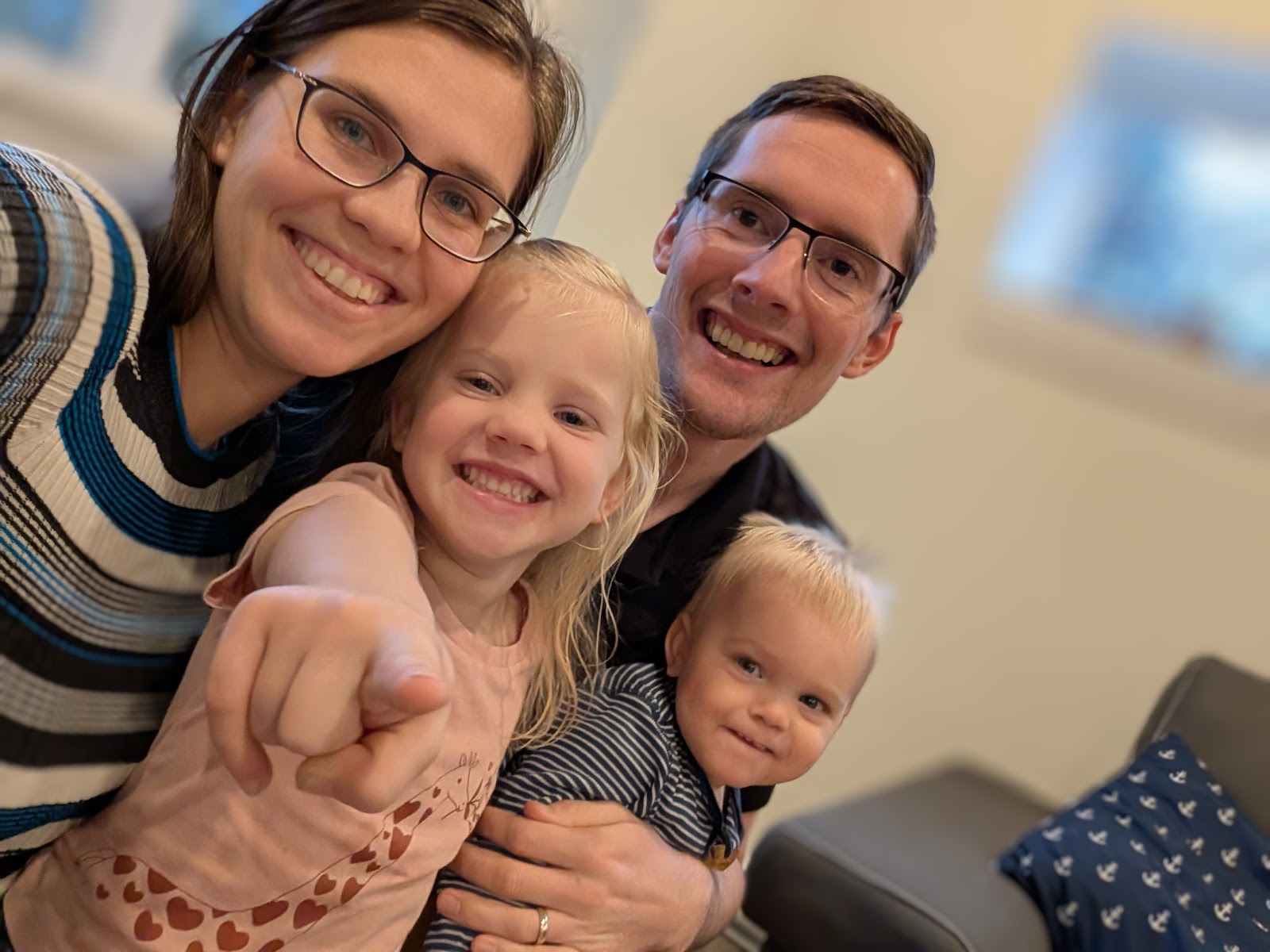On Day 3 of our time in Sangapi, we start off the morning with a hike up to another ridge nearby. This time, we are accompanied by the village health workers, who are hosting us. They offer a lot of insight into cultural practices, which makes our time with them very educational! Like all of the trails up and down the mountainsides, the shortest route is taken: straight up the slope. Having received some rain the previous night, the red clay quickly turns to mud and is exceptionally slick. Keeping one foot in the grass on the side of the trail is my approach to gaining some traction; since our hiking s
hoes were still drying after washing them following yesterday's trek, our Crocs and flip-flops are not the most ideal footwear!
After an approximately 45-minute hike, we arrive at the top of the ridge and walk a little further down the trail to meet some of the people who live on this ridge top. The owner of a piece of land shows us his two houses, as well as the new house that is currently being constructed. One of the houses is built on stilts, which prompts a discussion about why houses are built differently. We learn that it comes down to preference: often, younger people enjoy houses on stilts, whereas the older generation usually prefer to sleep on the ground level where the floor retains heat better during cool nights. After taking some time to look around and ask questions, we make the trek back to Sangapi where Nova is able to play for awhile before nap time. With another volleyball game and dinner also complete soon after, we are ready to relax for the evening.
We heard the news that Saturdays are a community meeting day in Sangapi, so we are excited to see what the day will bring when we wake up! Everything is still very quiet when we head outside around 9am, so we start with a walk up the airstrip. There are many gardens on all of the slopes leading down the ridge; this morning, however, we see people actively at work in a garden that is close by. Asking a few kids who are tagging along with us if they know how to get to that garden, they lead the way and we ask for a tour when we arrive. The owners of the land are thrilled to show us around their "yard," explaining how life is for them. One gentleman wants us to ask as many questions as possible, and he shares his worldview with us very openly. His pride of Sangapi, his tribe, and the peace that they exhibit shines through in all of his answers. Following a conversation with him, his elderly father arrives from working in his new garden. Like son, the father is eager to show us the work he was doing and demonstrates how he uses a shovel to manually turn all of the soil before planting. Mid-work, he turns his toque so that it is straight (yes, we're still trying to understand how so many people wear toques in the scorching heat!), poses, and explains that this would be a very good picture.
After a tour of the garden, the son shows us his wives' houses as well as his own. Traditionally, husbands are never allowed to enter their wife's house, and vice versa. Since this seemed to be a very traditional family, we asked some direct questions -- and got some answers that were more direct than others. "You have two wives? How many do you want?" "You are never allowed in each others' house? How is it possible for you to have children?" "Do your wives ever fight with each other?" Though they thought it was pretty funny for us to be asking these questions out loud, they were surprisingly open with us. We learned that this particular man wanted 5 wives (which would take awhile, considering the bride prices in the area), that the garden is used for having children, and that he is very fair and takes turns with his wives so they don't fight. While amusing to us, this is just life for many people in PNG; the way it has been is often the way it will be.
We thank the family for their tour and then head back to the village to see if the community event has started. People come to this event each weekend, some hiking 2-3 hours to arrive. This means that people trickle in slowly, but by noon the air is lively with chatter, a small market, and volleyball and basketball tournaments. Brandon joins the Sangapi team in a volleyball tournament: when it is his turn to play, the crowds flock around to watch the "tall white man." If he doesn't hit the ball for a minute or two, they all start calling out, "White man! White man!" If he hits the ball (or even better, spikes it), the crowd goes into an uproar of cheering and laughter. By uproar, I mean that Nellicia could hear exactly when Brandon hit the ball from our house, which was a 5-10 minute walk away! We had a great afternoon talking to people from various communities, and really enjoyed the event -- it was so simple, but allowed so many people to connect with each other in friendly conversations and sport.
With yet another busy day complete, we relaxed for the evening and prepared for Sunday. In church on Sunday, while most people sit on low benches that are about 6 inches off of the dirt floor, we were treated as guests of honour with plastic chairs. After speaking only Tok Pisin since our arrival, we were able to follow the sermon quite easily, which was a sign of our progress! We were all thankful for a day of rest after the busy days we had just had, and at the end of the day were excited for the new week ahead.






